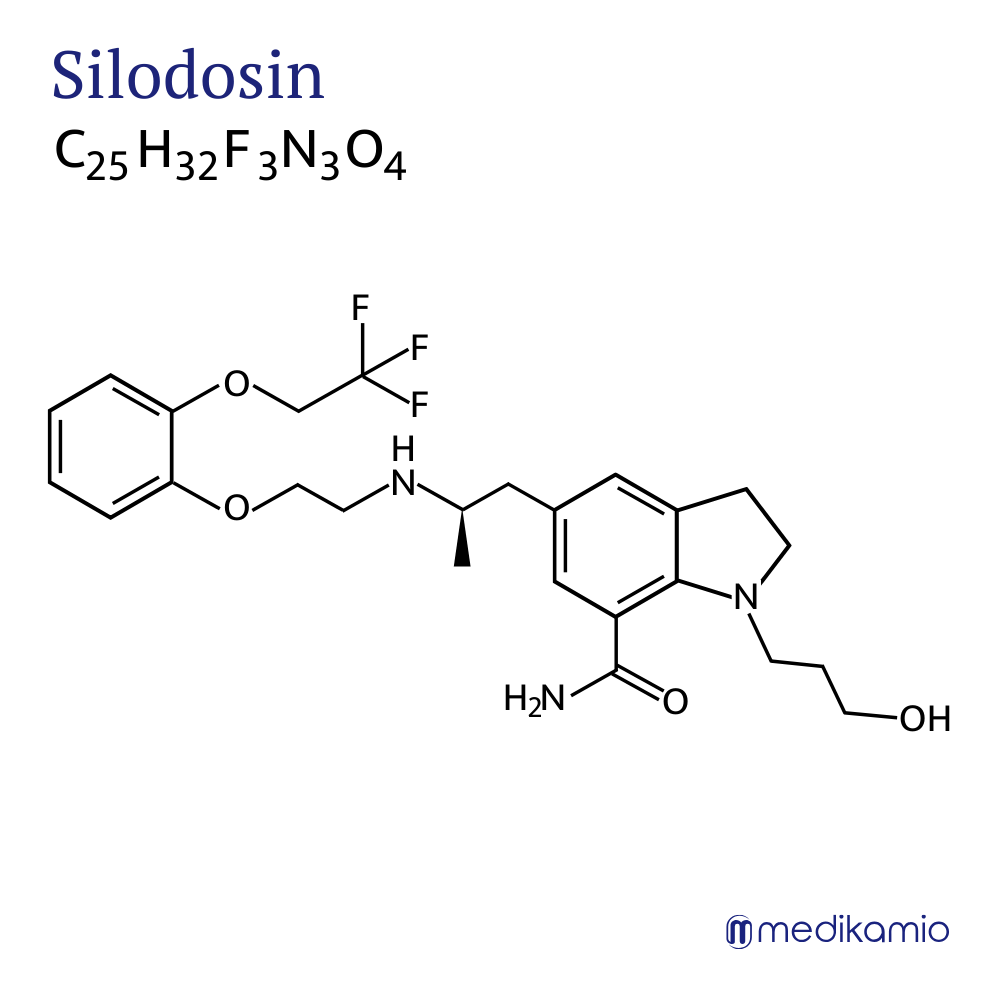Basics
Silodosin is a drug that is used to treat symptoms associated with benign prostatic hyperplasia (BPH). It belongs to the group of alpha-1-adrenoreceptor antagonists.
Benign prostatic hyperplasia (BPH) is a common condition in older men. It occurs when the prostate, a gland below the bladder, increases in size and presses on the urethra. Possible symptoms include difficulty urinating, weak urine flow and frequent urge to urinate.
The exact cause of BPH is not fully understood, but it is thought to be influenced by hormonal changes that occur as men age. It is thought that an increase in the level of dihydrotestosterone (DHT), a hormone derived from testosterone, stimulates the growth of prostate cells. This leads to an enlargement of the prostate and thus to the symptoms of BPH.



